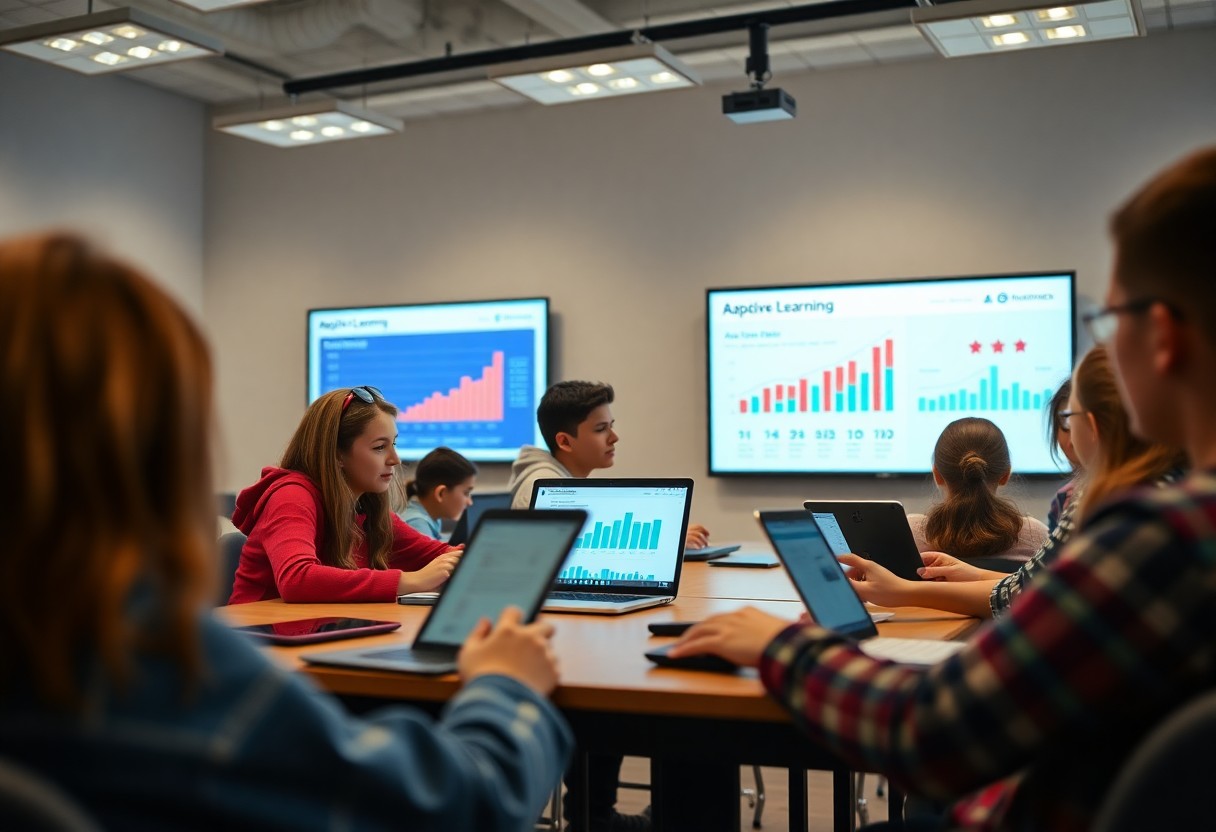Student data is a potent force in modern education, reshaping how we understand and cater to individual learning needs. Machine learning, a cutting-edge technology, is at the helm of this transformation, offering powerful insights that revolutionize teaching methodologies. In this insightful exploration, we investigate into the impact, benefits, and potential risks of integrating machine learning into education, shedding light on how it is redefining the future of learning.
The Rise of Educational Data
To understand how machine learning is shaping education, we must first recognize the rise of educational data. Data has always been integral to the field of education, but with the advent of technology and analytics, educators now have access to unprecedented insights about students and their learning processes.
The Importance of Student Data
One of the key advantages of utilizing student data is the ability to personalize learning experiences. By analyzing data on student performance, educators can identify strengths and areas for improvement, tailoring lessons to individual students to optimize their learning outcomes.
The Challenges of Collecting and Analyzing Data
Challenges arise in the collection and analysis of educational data. One major obstacle is the integration of data systems across various platforms and institutions, standardizing data formats to ensure accuracy and reliability.
Educational stakeholders must also address privacy concerns regarding the collection and storage of student data. With data breaches becoming increasingly common, safeguarding data security is paramount to maintaining trust within the education community.

Machine Learning in Education
What is Machine Learning?
Machine learning is a subset of artificial intelligence that allows computer systems to learn and improve from experience without being explicitly programmed. It involves algorithms that recognize patterns in data and make predictions or decisions based on that data. This technology enables computers to perform tasks that were once only possible for humans, such as recognizing handwriting, detecting fraud, and even driving cars autonomously.
How Machine Learning Can Enhance Education
On the forefront of reshaping education, machine learning has the potential to revolutionize how students learn and how instructors teach. By analyzing vast amounts of student data, machine learning algorithms can identify patterns and tailor personalized learning experiences to individual students. This leads to more efficient use of time and resources, as well as improved outcomes for students.
It is important to note that machine learning is not meant to replace teachers, but to enhance their capabilities. By automating mundane tasks like grading and providing insights into student performance, teachers can focus more on personalized instruction and mentoring. With the power of machine learning, education can move towards a more individualized approach, catering to the unique needs and learning styles of each student.
Personalized Learning
The Limitations of Traditional Teaching Methods
With traditional teaching methods, educators often face challenges in catering to the individual learning needs of each student. In a typical classroom setting, a one-size-fits-all approach is commonly adopted, which can leave some students struggling to keep up while others may find the pace too slow. This lack of personalized instruction can hinder student engagement and ultimately impact their academic performance.
How Machine Learning Can Facilitate Personalized Learning
The integration of machine learning in education has opened up new possibilities for personalized learning. By analyzing vast amounts of student data, machine learning algorithms can identify patterns and trends that help create personalized learning paths for each student. This tailored approach can significantly improve student outcomes by providing customized support and resources based on individual learning styles, preferences, and pace.
This innovative use of technology allows educators to efficiently track student progress, identify areas where additional support is needed, and adapt teaching strategies accordingly. By leveraging machine learning algorithms to deliver personalized learning experiences, educators can empower students to take control of their learning and reach their full potential in the classroom.
Identifying At-Risk Students
The Consequences of Falling Behind
With the ever-evolving landscape of education, it is crucial to address the issue of students who are at risk of falling behind. These students face a myriad of challenges that can impact their educational journey and future prospects. From poor academic performance to disengagement from school activities, these students are more likely to drop out of school and have limited opportunities for success in the future.
How Machine Learning Can Identify Early Warning Signs
Signs of student struggle can often go unnoticed in traditional educational settings. However, machine learning algorithms have the capability to analyze vast amounts of data quickly and efficiently to identify patterns and trends that may indicate a student is at risk. By taking into account various factors such as attendance, grades, behavior, and participation, these algorithms can provide educators with early warning signs that a student may need extra support.
Learning from these warning signs allows educators to intervene early and provide targeted interventions to help at-risk students succeed. By leveraging the power of machine learning, schools can implement proactive measures to support struggling students and ultimately improve overall student outcomes.
Optimizing Educational Resources
Once again, machine learning is transforming the way educational resources are allocated and optimized in schools. By analyzing vast amounts of data, machine learning algorithms can revolutionize resource distribution, ensuring that students receive the support they need to succeed.
The Inefficiencies of Traditional Resource Allocation
Allocation: Traditional resource allocation in education often relies on outdated methods and limited information. Schools may distribute resources based on general trends or historical data, rather than personalized student needs. This can lead to inefficiencies and disparities in resource allocation, ultimately impacting student outcomes.
How Machine Learning Can Optimize Resource Distribution
Learning: Machine learning offers a solution to the inefficiencies of traditional resource allocation by leveraging data-driven insights to optimize resource distribution. By analyzing student performance, behavior, and other relevant factors, machine learning algorithms can tailor resource allocation to individual student needs. This personalized approach ensures that each student receives the right support at the right time.
Educational: Machine learning can revolutionize resource distribution by predicting student needs, identifying at-risk students, and recommending interventions to support their success. By optimizing resource allocation, schools can enhance student outcomes, close achievement gaps, and create a more equitable education system.
Improving Teacher Effectiveness
The Impact of Teacher Quality on Student Outcomes
Your ability to impact student outcomes as a teacher is pivotal in the field of education. Research consistently shows that teacher quality plays a significant role in influencing student learning and achievement. Improving teacher effectiveness can lead to higher test scores, increased student engagement, and overall academic success.
How Machine Learning Can Support Teacher Professional Development
Support for teacher professional development is crucial in ensuring that educators have the necessary tools and skills to excel in the classroom. Improving teacher effectiveness through machine learning technologies can provide personalized insights and feedback to educators, enabling them to make data-driven decisions and enhance their teaching practices.
Machine learning algorithms can analyze vast amounts of student data to identify trends and patterns that may not be apparent to teachers. By leveraging this technology, educators can gain actionable recommendations on areas for improvement, effective teaching strategies, and interventions tailored to meet the diverse needs of students.
Enhancing Student Engagement
The Importance of Student Motivation
Now, when it comes to student engagement, motivation plays a critical role. Students who are motivated are more likely to be engaged in their learning, leading to better academic performance and overall success. Motivation can come from various sources, including intrinsic factors like personal interest in a subject or extrinsic factors like rewards and recognition.
How Machine Learning Can Increase Student Engagement
With the advancement of machine learning algorithms, educators now have powerful tools at their disposal to analyze student data and customize learning experiences to suit individual needs. By collecting and analyzing data on student behavior, performance, and learning preferences, machine learning algorithms can provide insights to educators on how to best engage their students.
Increased student engagement through personalized learning paths, real-time feedback, and adaptive learning experiences can revolutionize the way students interact with course material. By catering to the unique needs of each student, machine learning can help educators create a more stimulating and rewarding learning environment.
Data-Driven Instruction
The Benefits of Data-Driven Decision Making
Despite the challenges faced by educators in today’s complex educational landscape, data-driven decision-making offers a beacon of hope. By analyzing student data and performance metrics, educators can tailor their instructional strategies to meet the diverse needs of their students. This targeted approach not only improves student outcomes but also enhances overall classroom effectiveness. Through data-driven instruction, educators can identify strengths and weaknesses in real-time, enabling timely interventions and personalized learning experiences.
How Machine Learning Can Inform Instructional Design
On the frontier of educational innovation, machine learning holds the promise of revolutionizing instructional design. By leveraging complex algorithms and data analysis, educators can gain unprecedented insights into student learning behaviors and preferences. Machine learning algorithms can assess vast amounts of data to identify patterns and trends that would otherwise go unnoticed, helping educators optimize their teaching approaches for maximum impact.
Understanding the power of machine learning in informing instructional design is crucial for educators in the digital age. By harnessing the capabilities of artificial intelligence, educators can create more engaging and adaptive learning experiences that cater to the unique needs of each student.
Addressing Achievement Gaps
Many challenges exist in the education system, with one of the most persistent being the achievement gaps that affect students from various backgrounds and demographics. These gaps can manifest in differences in academic performance, standardized test scores, graduation rates, and college readiness. Addressing these gaps is crucial to ensure that all students have equal opportunities for success in their academic pursuits and beyond.
The Persistence of Achievement Gaps
To truly tackle achievement gaps, it is crucial to understand the root causes behind them. Socioeconomic disparities, inadequate access to resources, racial discrimination, and learning disabilities are some factors that contribute to these gaps. Despite efforts to bridge these differences, they continue to persist and hinder the educational outcomes of many students.
How Machine Learning Can Help Close Achievement Gaps
Achievement gaps can be addressed more effectively with the help of machine learning algorithms that can analyze vast amounts of student data to identify patterns and trends. By utilizing predictive analytics, educators can intervene early and provide targeted support to students who are at risk of falling behind. Machine learning tools can also personalize learning experiences, adapt curricula to individual student needs, and offer real-time feedback to improve student outcomes.
Ensuring Data Privacy and Security
The Risks of Data Breaches
Not ensuring data privacy and security in education can have severe consequences. Data breaches involving student information can lead to identity theft, fraud, and even emotional distress for the individuals affected. Schools and educational institutions hold a vast amount of sensitive data, making them prime targets for cyberattacks. The repercussions of a data breach can tarnish an institution’s reputation and erode trust among students and parents.
How Machine Learning Can Protect Student Data
For educational institutions, harnessing the power of machine learning can be a game-changer in safeguarding student data. Machine learning algorithms can detect unusual patterns in data access and usage, allowing for real-time threat detection and response. By implementing machine learning-powered security measures, institutions can proactively fortify their defenses against cyber threats.
A proactive approach to data security using machine learning can significantly enhance the protection of student data. Machine learning models can continuously learn and adapt to new cyber threats, staying one step ahead of potential attacks. With the ability to identify and mitigate risks in real-time, machine learning offers a powerful defense mechanism in the ever-evolving landscape of data security.
The Future of Education
The Potential of Machine Learning to Transform Education
All across the world, educators are exploring the vast potential of machine learning to revolutionize the way we teach and learn. With the ability to analyze vast quantities of data, machine learning algorithms can personalize learning experiences, identify knowledge gaps, predict student performance, and even suggest tailored study materials. These advancements have the power to completely transform traditional education systems, making them more effective and efficient than ever before.
The Challenges of Implementing Machine Learning in Education
The integration of machine learning in education comes with its own set of challenges. While the promise of personalized learning is enticing, there are concerns about data privacy, algorithm bias, and the ethical implications of using AI in the classroom. Learning how to navigate these challenges will be crucial in ensuring that machine learning technology benefits students and educators alike.
Learning how to address these challenges will be necessary for the successful implementation of machine learning in education. Educators and policymakers need to work closely with data scientists and technologists to develop robust frameworks that prioritize student well-being and uphold ethical standards. By proactively tackling these obstacles, we can harness the full potential of machine learning to create a brighter future for education.
Overcoming Implementation Barriers
The Technical Challenges of Implementing Machine Learning
After gathering student data, the challenge lies in implementing machine learning algorithms effectively. The technical aspects of machine learning require expertise and resources that may not be readily available in educational institutions. The complexity of algorithms, the need for clean and organized data, and the requirement for powerful computing resources can be daunting barriers to overcome.
The Cultural and Pedagogical Challenges of Implementing Machine Learning
Any shift towards incorporating machine learning in education faces cultural and pedagogical challenges. Resistance from educators who may not trust machine-generated insights or fear the replacement of traditional teaching methods can be a roadblock. Additionally, there may be uncertainty about how to integrate machine learning tools into existing curricula and teaching practices.
Implementing machine learning in education requires a balancing act between embracing innovation and respecting traditional educational practices. Educators must be empowered to understand and utilize machine learning tools effectively while also addressing any apprehensions or misconceptions that may arise among stakeholders.
The Role of Human Judgment
The Importance of Human Oversight in Machine Learning
Role Unlike machine learning algorithms, human judgment brings a level of critical thinking and contextual understanding that is crucial in interpreting student data accurately. While machine learning can process vast amounts of data quickly, it may not always consider important nuances or unforeseen variables that a human educator would be able to pick up on. This is where human oversight plays a crucial role in ensuring that the insights generated by machine learning models are valid and actionable.
How Human Judgment Can Complement Machine Learning
Human As much as machine learning algorithms excel at identifying patterns and trends within student data, they lack the ability to empathize, understand emotional nuances, or exercise ethical considerations. Human educators can provide the necessary contextual understanding, empathy, and ethical judgment that complements the analytical capabilities of machine learning algorithms. By working together, human judgment and machine learning can create a more holistic approach to leveraging student data to drive effective educational practices.
The synergy between human judgment and machine learning in education is a powerful combination that can lead to more accurate insights, personalized learning experiences, and ultimately better outcomes for students. Educators can use machine learning models to identify trends and patterns in student data and then apply their expertise to interpret these findings in the context of individual student needs and circumstances.
To wrap up
Conclusively, it is evident that machine learning is playing a significant role in reshaping education by providing valuable insights into student data. The integration of this technology has the potential to personalize learning experiences, identify at-risk students, and improve overall educational outcomes. As we continue to advance in technology, the possibilities for leveraging machine learning in education are endless, promising a more efficient and effective learning environment for students worldwide.
FAQ
Q: What is machine learning?
A: Machine learning is a subset of artificial intelligence that allows systems to learn and improve from experience without being explicitly programmed.
Q: How is machine learning reshaping education?
A: Machine learning is reshaping education by personalizing the learning experience, identifying at-risk students, and optimizing educational resources.
Q: What are some applications of machine learning in education?
A: Some applications of machine learning in education include intelligent tutoring systems, predictive analytics for student performance, and automated grading systems.
Q: How does machine learning help in personalizing the learning experience?
A: Machine learning algorithms analyze student data to identify individual learning styles and preferences, allowing educators to tailor instruction to each student’s needs.
Q: Can machine learning help in identifying at-risk students?
A: Yes, machine learning algorithms can analyze various data points such as attendance, grades, and behavior to flag students who may be at risk of dropping out or falling behind.
Q: How does machine learning optimize educational resources?
A: Machine learning helps in optimizing educational resources by analyzing data to determine the most effective teaching methods, resource allocation, and curriculum development strategies.
Q: Are there any challenges or concerns regarding the use of machine learning in education?
A: Some challenges include data privacy issues, the potential for algorithmic bias, and the need for teacher training to effectively implement machine learning technologies in the classroom.




